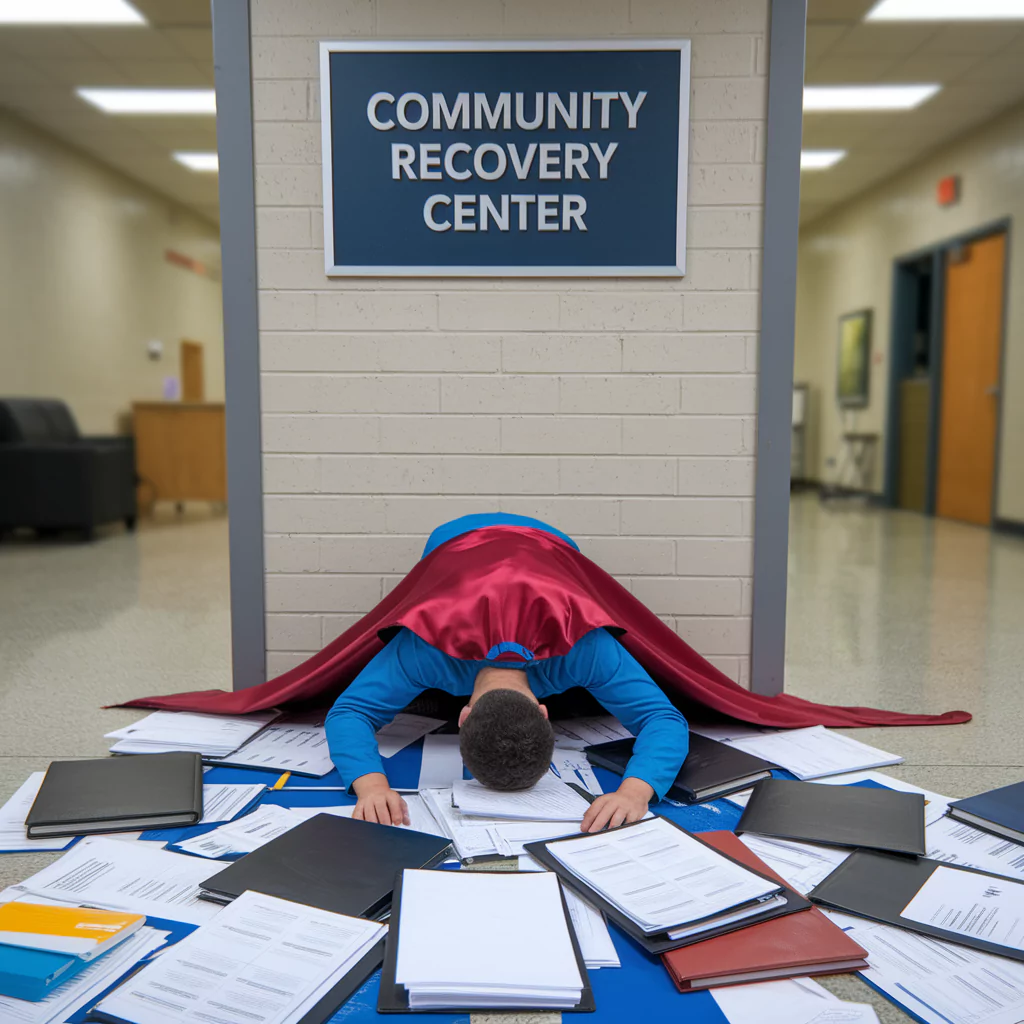

There’s no manual for recovery leadership.
Most people step into the role with little warning, no training, and a mountain of pressure.
Some were already in public leadership roles before the disaster hit.
Others were tapped mid-crisis and told, “We need you to run recovery.”
Either way, the learning curve is brutal.
And while every disaster is different, the mistakes recovery leaders make tend to be the same. These are the traps that derail momentum, burn out teams, and erode trust—even when the leader means well.
If you’re in the recovery hot seat—or about to be—this blog is for you. Here are the three biggest mistakes recovery leaders make, and how to steer clear of them.
One of the most common early missteps is believing that writing a plan equals making progress.
So much energy goes into assessments, meetings, vision statements, and strategic frameworks.
And none of those things are bad. In fact, you’ll eventually need all of them.
But here’s the truth: plans don’t recover communities—systems do.
The real work of recovery is building the structure that can carry out whatever plan you write.
That means:
A staffed, empowered coordination team
Defined decision-making channels
Basic tools for tracking needs, programs, and partners
A consistent operating rhythm across sectors
If you skip that and jump straight into planning mode, the plan will stall the moment you try to implement it.
How to avoid this mistake:
Build your coordination structure first. Even a simple team with weekly check-ins and shared task tracking can give you the traction to start delivering early wins. Once you have that base, the planning work becomes realistic instead of theoretical.
Whether out of pressure, habit, or fear of dropping the ball, many recovery leads fall into the trap of trying to control too much.
They show up to every meeting.
They review every memo.
They try to own every solution.
And within a few months, they’re exhausted, reactive, and overwhelmed—while their team is underutilized and unsure of their lane.
Recovery leadership isn’t about being the hero.
It’s about building the system and empowering others to run it.
You don’t need to have all the answers. You need to:
Recruit the right people
Clarify roles
Protect decision-making space
Create a culture of visibility and shared ownership
Trying to be the recovery czar usually backfires. Even the most capable leaders can’t scale themselves. And burnout at the top leads to instability across the operation.
How to avoid this mistake:
Start by asking: Where am I the bottleneck?
Then build a delegation system. Empower domain leads. Create working groups. Set up issue-tracking tools. The more you share the load, the more resilient your recovery becomes.
Many recovery leads focus heavily on internal operations—and neglect the external narrative.
That’s understandable. You’re busy putting out fires, aligning agencies, and trying to get funding moving.
But here’s what happens if you don’t communicate:
Residents assume nothing is happening
Partners feel out of the loop
Rumors fill the void
Mistrust grows
And when mistrust sets in, it gets harder to lead. Harder to make decisions. Harder to keep your team on track.
You don’t need a PR firm.
But you do need a simple, honest, and regular communications rhythm.
It could be:
A weekly email blast with real updates
A monthly virtual town hall
A simple public-facing dashboard showing progress
A recovery hotline that actually gets answered
The key isn’t polish—it’s consistency and truth.
How to avoid this mistake:
Assign someone to own your external communication early. Build a cadence. Even if it’s just “Here’s what we know, here’s what we’re working on, and here’s where you can plug in,” it will go a long way in building trust.
Bonus Trap: Waiting for Perfect Conditions
This one ties them all together.
So many recovery leaders wait for things to settle down before acting.
They say:
“Once we get funding, we’ll launch the team.”
“Once the state gives us clarity, we’ll build the plan.”
“Once we’re not in crisis mode, we’ll start coordinating.”
But recovery doesn’t wait.
If you’re not building now, you’re falling behind—even if it feels like you’re not ready.
The best leaders don’t wait for perfect conditions. They start with what’s real, build fast, adjust constantly, and focus on systems that can evolve over time.
Final Thought: Good Recovery Leadership Isn’t About Heroics—It’s About Structure
If you avoid these three mistakes:
Planning without systems
Trying to do it all yourself
Neglecting communication
…you’ll be ahead of 90% of recovery operations.
You’ll have a more stable team.
More aligned partners.
More trust from the community.
And more traction when it counts.
Recovery isn’t easy. But it becomes a lot more manageable when you lead with structure, not just strategy.
Explore our full training catalog for tools and lessons that help you build recovery systems, support your team, and lead with confidence—even when the roadmap doesn’t exist.



